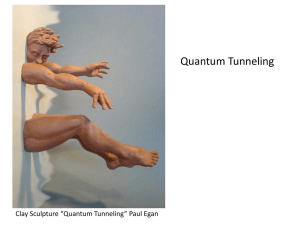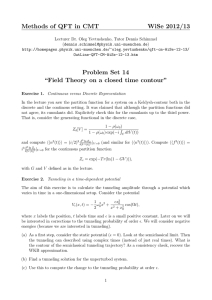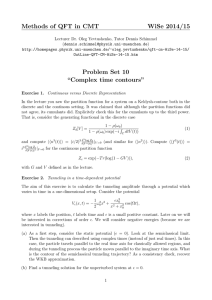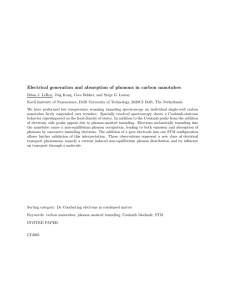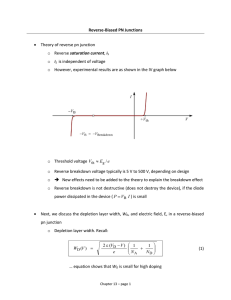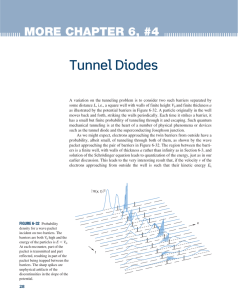1 8.511 Theory of Solids I
advertisement
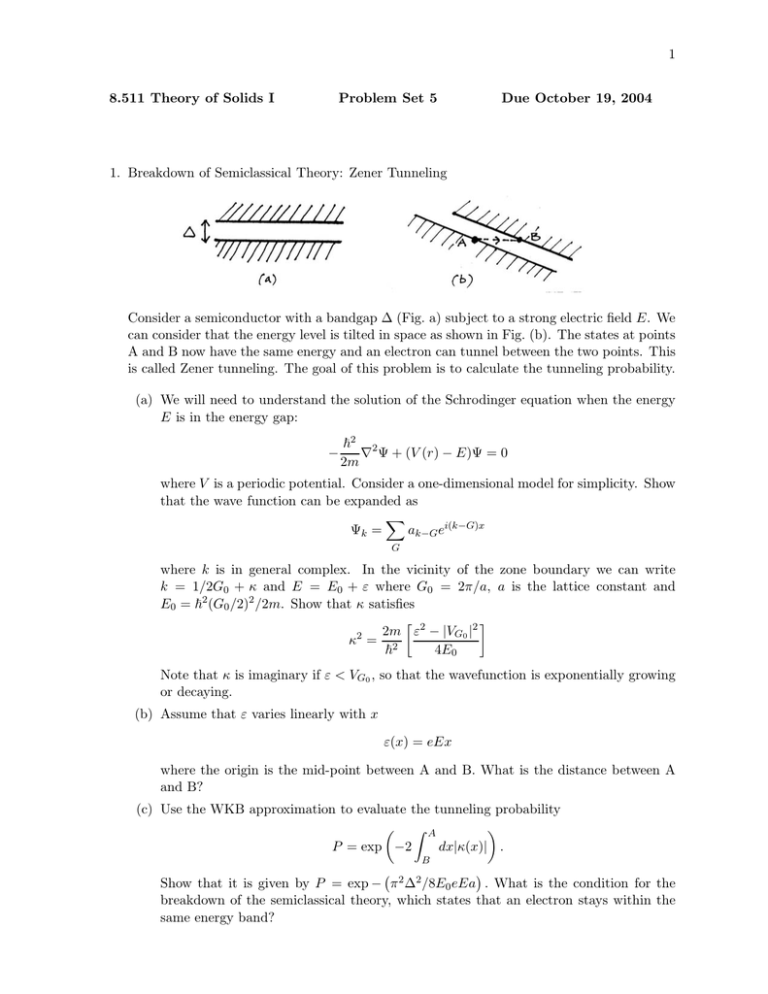
1 8.511 Theory of Solids I Problem Set 5 Due October 19, 2004 1. Breakdown of Semiclassical Theory: Zener Tunneling Consider a semiconductor with a bandgap Δ (Fig. a) subject to a strong electric field E. We can consider that the energy level is tilted in space as shown in Fig. (b). The states at points A and B now have the same energy and an electron can tunnel between the two points. This is called Zener tunneling. The goal of this problem is to calculate the tunneling probability. (a) We will need to understand the solution of the Schrodinger equation when the energy E is in the energy gap: − �2 2 � Ψ + (V (r) − E)Ψ = 0 2m where V is a periodic potential. Consider a one-dimensional model for simplicity. Show that the wave function can be expanded as � Ψk = ak−G ei(k−G)x G where k is in general complex. In the vicinity of the zone boundary we can write k = 1/2G0 + κ and E = E0 + ε where G0 = 2π/a, a is the lattice constant and E0 = �2 (G0 /2)2 /2m. Show that κ satisfies � � 2m ε2 − |VG0 |2 2 κ = 2 � 4E0 Note that κ is imaginary if ε < VG0 , so that the wavefunction is exponentially growing or decaying. (b) Assume that ε varies linearly with x ε(x) = eEx where the origin is the mid-point between A and B. What is the distance between A and B? (c) Use the WKB approximation to evaluate the tunneling probability � � A � P = exp −2 dx|κ(x)| . B � � Show that it is given by P = exp − π 2 Δ2 /8E0 eEa . What is the condition for the breakdown of the semiclassical theory, which states that an electron stays within the same energy band? 2 2. Landau Levels Consider an electron in a cubic box L×L×L in a uniform magnetic field B in the z direction. It satisfies � �2 1 �� e + A Ψ = EΨ 2m i c (a) With the choice of gauge A = −By x̂, show that � � 1 E = n+ �ωc + �2 kz2 /2m 2 where n are integers and �ωc = eB/mc. (b) Show that the degeneracy of each level is given by eBL2 /hc and compare this with the result of Onsager’s quantization rule.
